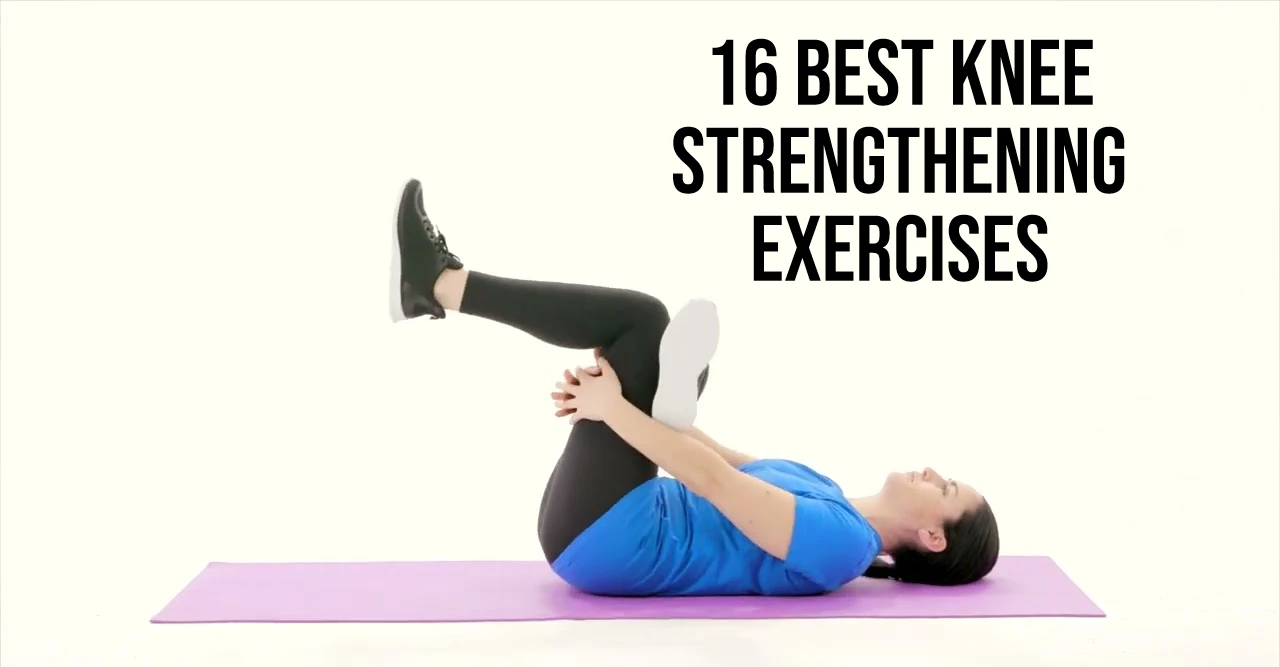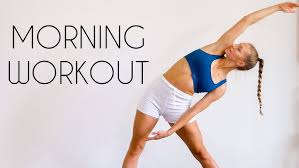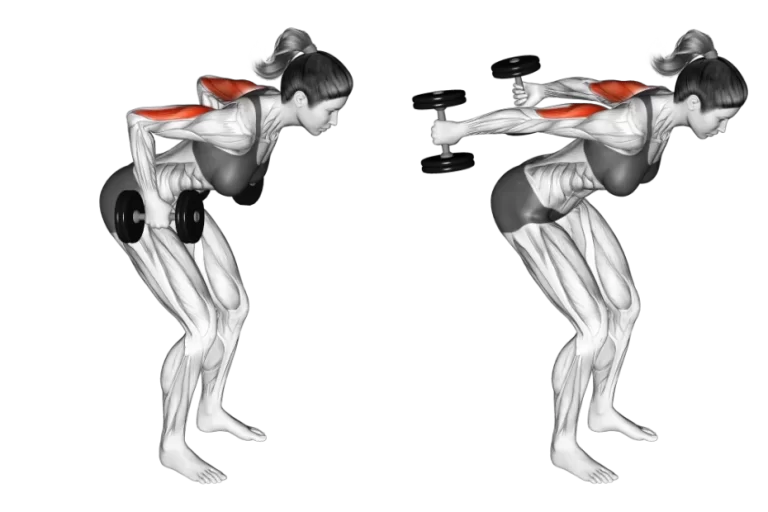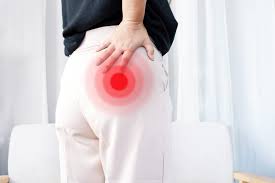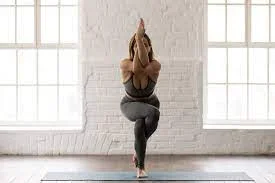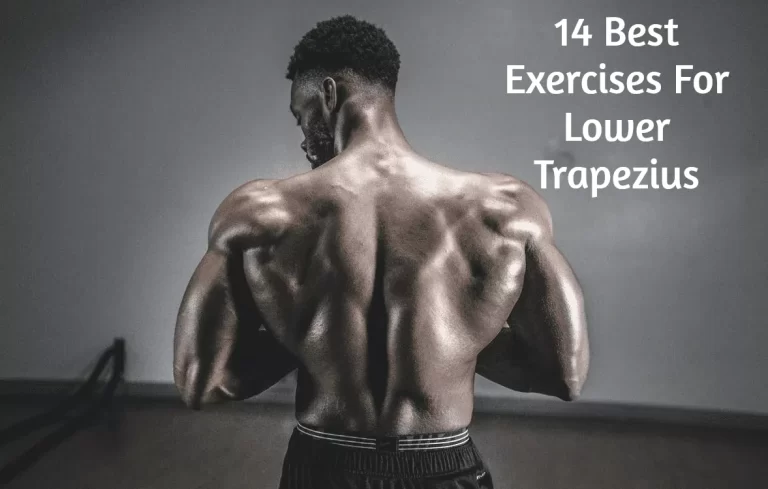16 Best Knee Strengthening Exercises
Maintaining strong and flexible knees is essential for overall joint health and mobility. Whether you’re an athlete, a fitness enthusiast, or someone looking to improve their knee stability, incorporating knee-strengthening exercises into your routine can be beneficial. Strong knees not only support daily activities but also contribute to injury prevention and rehabilitation.
The knee joint is particularly vulnerable to wear and tear, and strengthening the muscles surrounding it can provide added stability and protection.
Table of Contents
Introduction
Doctors may suggest stretches and exercises to help strengthen the muscles surrounding the knee. This might lessen discomfort and support the knees.
- People of any age might experience knee pain.
- Athletes are frequently impacted by patellofemoral pain syndrome, which is sometimes known as a runner’s knee.
- Knee pain is not just frequent among athletes; it may also be problematic for those with arthritis.
- Exercise should only sometimes be avoided, despite the allure of doing so when knee discomfort strikes.
- By giving the knee additional support, several exercise regimens can help reduce current knee pain and help avoid further damage or pain.
- Before starting any workouts, those with knee pain should consult a healthcare provider.
- The advantages of knee-strengthening exercises are discussed in this article.
- Nineteen exercises that can strengthen the knee and reduce discomfort are also listed and explained.
Benefits of knee strengthening exercises
- Without using healthcare, the Foundation for Arthritis claims that exercise may be the best way to treat osteoarthritis.
- Knee health and injury prevention can also be achieved with strong, flexible muscles.
- Exercises that strengthen the knee joint indirectly impact the knee.
- They can, however, make the surrounding muscles stronger.
- Strong legs are better suited to provide more effective knee support.
- Reducing pressure and tension on the joints may help people feel better and engage in more activities.
- The muscles that surround the knee can be improved with certain exercises.
- A person should cease performing these exercises and consult a medical expert or physical therapist if they become painful.
- Before starting any fitness regimen, someone with severe knee discomfort should speak with a medical expert.
- Before starting any knee-strengthening exercises, it is a good idea to warm up with some gentle movement.
- Mild exercises that are easy on the knees include riding, walking, and using an elliptical machine.
- The muscles can become more flexible and receive increased circulation when engaging in this kind of exercise.
Knee Strengthening Exercises
- Moderate strengthening and stretching exercises can help reduce knee pain and improve range of motion as well as mobility if the cause is arthritis, surgery, or an injury.
- It can appear contradictory to exercise an injured or arthritic knee, just doing so is better for your knee than doing nothing.
- Your knee may tighten up if you don’t move it, making the pain worse.
- The muscles that support your knee joint can be strengthened with simple stretching and strengthening activities.
- Stronger muscles can facilitate easier knee joint movement and lessen the strain and impact on your knee.
- For sure the exercises are safe for you, consult a physician or physical therapist before beginning an exercise program for knee pain.
- If you have significant knee discomfort, your doctor may suggest imaging to determine the extent of your injury.
- They might suggest some adjustments or a physical therapy-supervised workout regimen based on your current situation.
- Working the muscles above your knee regularly will help lessen the strain on your knee joint, according to the American Academy of Orthopaedic Surgeons.
- To improve your knees, focus on workouts that strengthen your hips, quads, glutes, and hamstrings.
The following are the best knee Strengthening Exercises;
Half squat
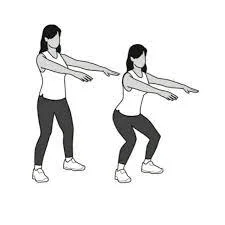
Steps To Follow
- Position yourself in a standing squat by putting your feet about shoulder-width apart.
- Put your hands in front of you or on your hips for balance.
- Pull forward slightly and descend roughly ten inches at a time.
- This is the midpoint stage of a complete squat.
- After a little period, push through your heels to stand up.
- Perform 10 reps in 2 or 3 sets.
Calf raises

Steps To Follow
- As you stand, spread your feet shoulder-width apart.
- For support, take a seat close to a wall or hold the back of a chair.
- Raise both heels off the floor to position yourself on the balls of your feet.
- Reduce your heels gradually to the beginning position.
- When using this exercise for strengthening your calf muscles, control is key.
- Perform 2-3 sets of 10 reps.
Hamstring curl

Steps To Follow
- Face the wall while standing or get support from a chair.
- Place your feet hip-width apart.
- Point one heel upward, flex your knee, and raise one foot toward the sky.
- Maintaining your upper body still and your hips pointed forward, move as far as you can.
- For five to ten seconds, hold.
- Release and go back to where you were before.
- Work each leg for two to three sets of ten repetitions.
Leg extensions
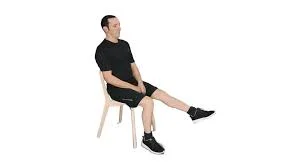
Steps To Follow
- In a chair, take a position.
- Place your feet about hip-width apart and flat on the ground.
- Without lifting your buttocks off the chair, look straight ahead, tighten your thigh muscles, and extend one leg as high as you can.
Side leg raises
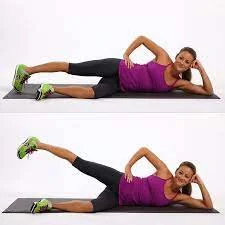
Steps To Follow
- Sleep on your side with your legs stacked on top of each other.
- One hand should be resting on the ground in front of you while the other is holding your head.
- Stretch your upper leg as high as it is comfortable for you.
- They should be ready to feel this on your side hips.
- After a little pause at the top, lower your leg.
- Work each leg for two to three sets of ten repetitions.
Prone leg raises
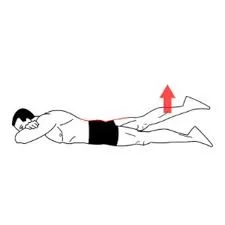
Steps To Follow
- A yoga mat can be used to provide additional padding under you during this workout.
- Resting on your stomach, extend your legs straight out before you.
- Feel free to rest your head on your arms.
- Lift your left leg as high as you can without experiencing pain, using your glute and hamstring muscles.
- You should keep your pelvic bones on the floor during this exercise.
- For five seconds, keep your leg raised.
- After pausing for two seconds, lower your leg and repeat.
- Work each leg for two to three sets of ten repetitions
Straight leg raises
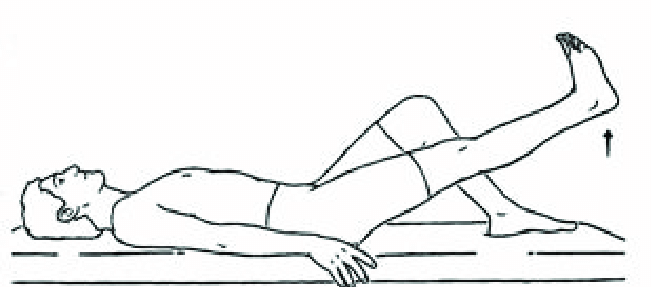
Steps To Follow
- This simple knee-strengthening exercise is ideal for beginners.
- The quadriceps muscles are worked, which helps to stabilize the knee joint when moving.
- First, take a seat on your back.
- Bending at the knee and placing the foot flat on the floor, bring one leg in.
- Maintain the opposite leg straight in front of you.
- Raise the straight leg to the level of the bent knee while maintaining the bent leg stationary.
- Squeeze the quad and point the foot.
- After 10 repetitions, switch legs.
Glute bridges
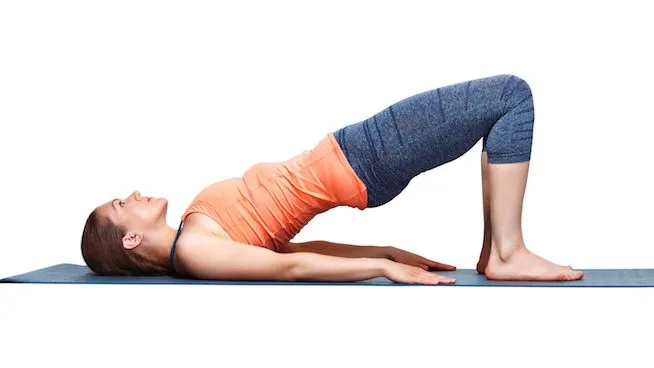
Steps To Follow
- Select a level surface and lie on your back.
- With both feet flat on the floor, bring your knees in towards your body to an easily bent position.
- To lift your glutes off the ground, peel your low, mid, and upper back off the floor by pressing through your heels.
- To help support the lower back, draw in your abs.
- Squeeze your glutes while in the top position, then slowly lower yourself back to the starting position. 10 times over, repeat.
Marching glute bridges
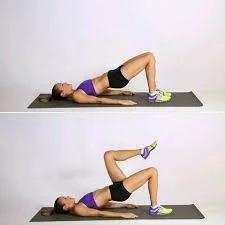
Steps To Follow
- Having your feet hip-width apart and your knees bent, lie on your back.
- Arms by your sides, relax. As though you were zipping into a tight pair of trousers, draw your navel in towards your spine.
- Gradually raise your hips, low back, and mid-back off the ground.
- Lift your right foot off the ground and apply pressure through your feet, as though you’re about to march.
- Lift your left foot after putting your right foot back on the ground.
- When you lift each foot off the floor, maintain a stable hip position.
- To make sure your hands are keeping still, rest them on your hips.
- Advance each foot 5 times.
Wall sit

Steps To Follow
- The wall sit is an excellent exercise for developing the quadriceps, calves, and glutes.
- It also helps to increase endurance. Sit back against the wall in an open area against a clear wall.
- Squat down until your hips and knees make a 90-degree angle.
- Try to maintain a flat back against the wall for 10 seconds. total 3 wall seats completed.
Seated leg raises
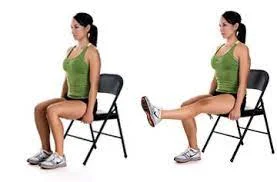
Steps To Follow
- Start by bending both of your knees while sitting on a chair to begin this knee-strengthening exercise.
- Squeeze the quadriceps, flex the foot, and straighten the opposite leg out in front of you while maintaining one foot on the ground.
- The leg should then be gradually raised until it is parallel to the floor.
- After pausing, carefully bring the leg back to its starting position.
- After 10 repetitions, switch legs.
Standing hamstring curl
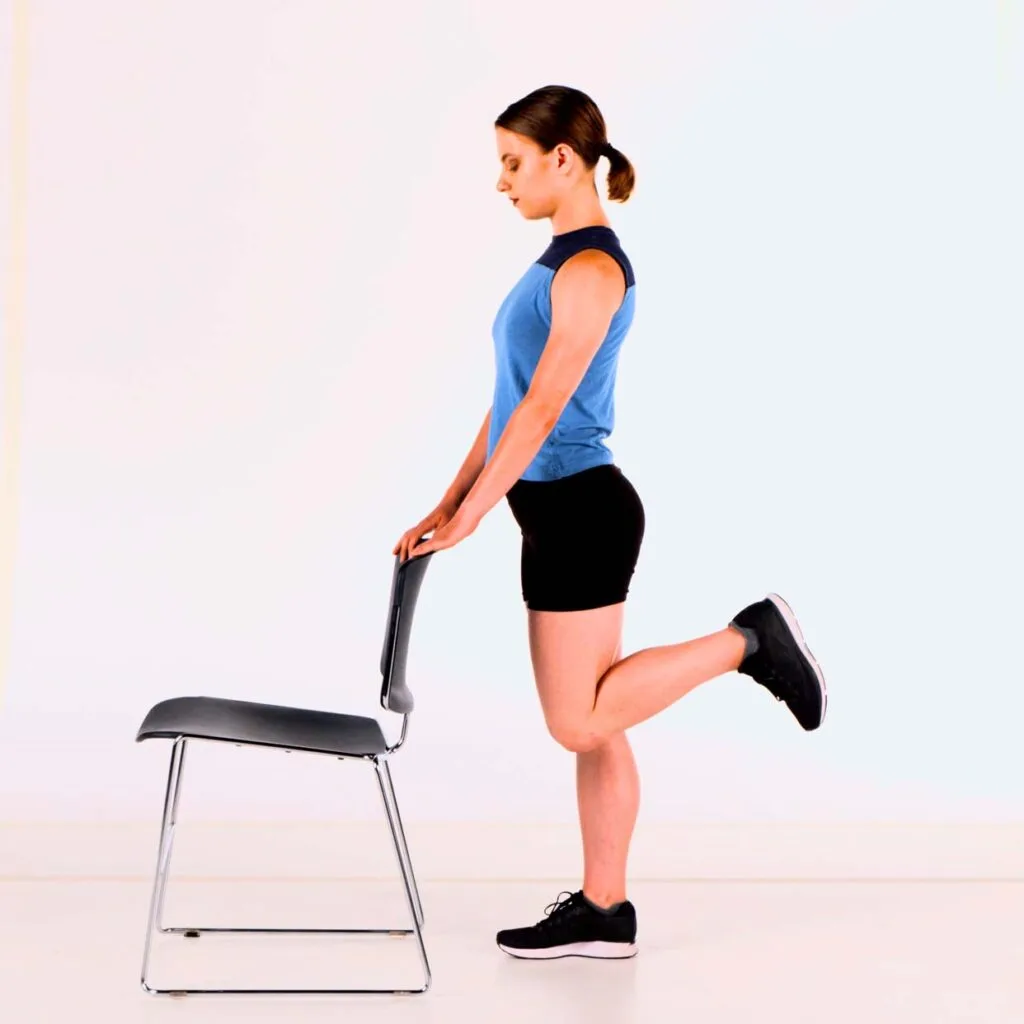
Steps To Follow
- Maintain a standing stance and support yourself using a chair or wall.
- Raise one leg off the ground by bending the knee to a ninety-degree angle.
- Step back and start again after two seconds of holding.
- After 10 repetitions, switch legs.
Leg lifts

Steps To Follow
- Place your back flat on the floor and sleep down. Use a folded blanket, yoga mat, or workout mat for comfort on hard floors.
- To bring the foot closer to the body, keep the left leg straight and slightly bend the right leg at the knee.
- Picture the belly button pulling down towards the floor to help you bring your abdominal muscles inward.
- You should apply more support for the exercise by pressing your lower back on the floor in this manner.
- To ensure there is no space between the small of the back and the floor, place a hand beneath the lower back.
- Gently press the lower back down on top of the hand if there is room for it.
- Lift your left leg slowly without bending at the knee.
- Keep the toes pointed upward and stop until the leg is about 12 inches above the ground.
- It shouldn’t be higher than the right leg’s bent knee.
- Raise the left leg slowly five times.
- Return the leg to the floor gradually.
- Don’t put it down or drop it too quickly.
- Repeat a second time with the same leg.
- Repeat on the other side. Perform 2-3 sets, 3 repetitions per side.
Step exercises
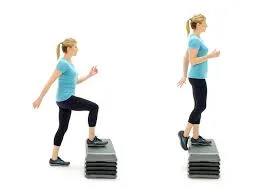
Steps To Follow
- Use a large, sturdy exercise platform or stool that is no taller than 6 inches in height.
- Allow your left foot to drop as you lift your right foot up onto the stool.
- The left foot should hang behind the stool rather than resting on it.
- Try to maintain your weight on your right foot for a maximum of 5 seconds.
- Step down with the left foot slowly, and then the right foot.
- Step up first with your left foot, and immediately cross your legs.
- Do 5 reps on each side as you repeat.
Single-leg dip
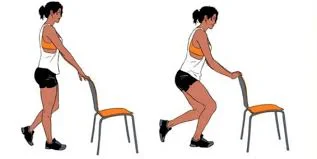
Steps To Follow
- Use a chair on one side, and for balance, while standing, rest a hand on the chairback.
- Your right leg should be raised around 12 inches off the ground.
- The whole body should be supported by the left leg.
- As you slowly sag a few inches, shift your weight to the supporting leg’s heel.
- For 3-5 seconds, hold.
- Straighten up gradually.
- Continue, then swap sides.
Toe touches
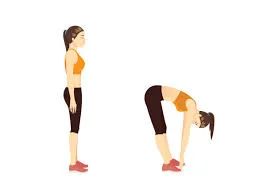
Steps To Follow
- The back part of the leg’s hamstrings can be stretched in a variety of ways.
- One way is through the tradition of touching toes.
- Bending at the hips, steadily extend the arms downward while keeping the feet close together.
- Legs should remain straight, but knees shouldn’t be locked.
- Stretch your fingers to the tips of your toes and hold them there for 30 seconds.
- It might not be possible to reach the toes initially.
- In this instance, aim to bring the fingers as near to the toes as you can without creating any discomfort.:
Conclusion
Exercise is a safe, non-invasive way to alleviate moderate knee discomfort caused by arthritis, overuse, or other reasons. Knee-strengthening exercises are a great way to keep your legs strong and help avoid injuries. Stretching to keep muscles flexible can also prevent or alleviate discomfort.
Before starting any fitness program, people with medical issues should consult a healthcare provider. It may be possible to alleviate pain, increase your range of motion and flexibility, and lower your chance of further injury by engaging in stretching and strengthening activities that focus on the muscles that support your knees.
Before starting an exercise program, it is important to see a doctor or physical therapist for any form of joint issues. Based on the source of your pain and its associated factors, they can also suggest exercises and alterations.
FAQ
Strolling. Walking can help strengthen the muscles in your knees and is a low-impact exercise that doesn’t overtax them. Step up to a half-hour walk three to five times a week by starting out slowly.
Squats, when done correctly, can strengthen the knees and be good for the knees, according to a review of studies on the subject. In addition, the review indicates that in contrast to half and quarter squats, deep squats that reach 90 degrees or more should not cause knee pain or injury to the knee joint.
Use Low-Impact Exercise to Support Your Joints
Try swimming, cycling, and brisk walking as a starting point. To strengthen your knee joints, try wall squats, leg raises, calf raises, and hamstring curls.
It has been discovered that physical therapy and rehabilitation programs work well for treating knee issues. Frequent physical treatment can enhance the quadricep muscle’s strength and range of motion while also assisting in lowering the overall pain and suffering linked to knee weakness.
Riding a bicycle has less effect on the joints than high-impact exercises like sprinting or leaping. For people who experience knee pain, it is consequently an excellent option. Cycling helps strengthen the muscles surrounding the knee, which supports the joint and reduces pain.
References
- Suffer from knee pain? These 10 exercises will help. (2023, July 26). TODAY.com. https://www.today.com/health/diet-fitness/knee-strengthening-exercises-at-home-rcna33252
- Lindberg, S. (2023, May 8). 10 Exercises to Help Relieve Knee Pain. Healthline. https://www.healthline.com/health/exercises-for-knee-pain#bottom-line
- Berry, J. (2023, December 15). How to strengthen your knee. https://www.medicalnewstoday.com/articles/325804#summary

